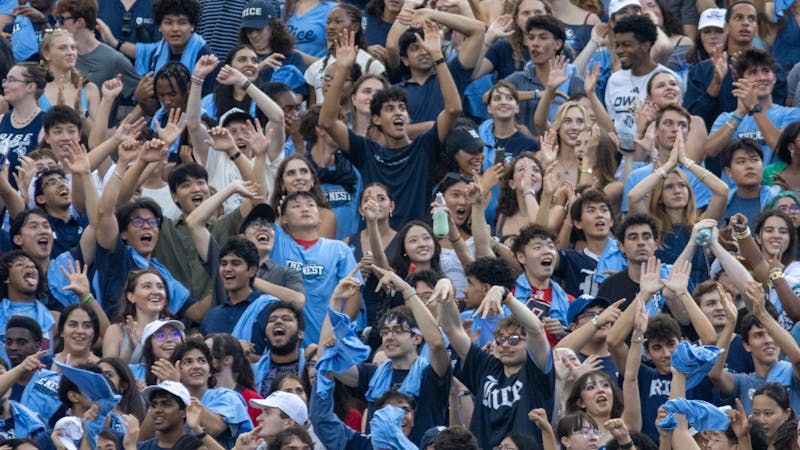Give credit where it is due
The credit-hour cap proposal going through the Faculty Senate is garnering infamy with the Rice student body. A diverse amalgam of students is responding to the cap proposal in a variety of ways, and the conversation has largely become bogged down in a murky back-and-forth. Here, I attempt to delineate one by one the arguments against the cap and respond to the arguments for the cap. It should be noted that I respond only to the proposal for a cap on non-incoming students.
Arguments against the cap
1. The premise of the cap, namely to decrease student stress, is misleading. The number of credit hours in a schedule is not always indicative of its difficulty. A 19-credit-hour semester can be perfectly reasonable, while some 13-credit-hour semesters are hell on Earth.
2. The cap disproportionately affects students without AP credit, students trying to graduate early, undecided students, pre-professional students, engineering students, double/triple majors (and/or minors) and students who research for credit, among others. These populations of students generally need to take heavier class loads at certain chokepoints during their college career, and this cap targets them unfairly.
3. The cap limits Rice students’ flexibility in stepping out of their majors and taking classes for leisure. In a sense, this cap encourages students to “stay in their comfort zone” academically.
4. Some majors have an enriched number of classes that are four credit hours (e.g., physics and statistics). The cap places students of these majors under tighter credit restrictions.
5. Though tuition costs continue to increase, a limit on the number of credit hours we can take (i.e., the amount of services we can receive) seems paradoxical. Why is it that we could be charged more to receive less?
6. Finally, the shopping period has a 20-hour cap, but this results in a small accounting problem. If someone decides to use the 20-hour cap during the shopping, they are obliged to drop a class. The large majority of the time, the class dropped will be three credit hours, meaning there is an implicit 17-hour cap on the rest semester (unless you sign up for 18 hours and don’t shop). A one- or two-hour class could be dropped, but not only are these classes less abundant in schedules (and thus statistically less likely to be involved in the drop process), they also tend to be required classes (such as labs).
Responses to arguments for the cap
The cap will lower stress among students.
The cap primarily targets students with high workloads and extracurricular commitments. These particularly motivated, ambitious students would not respond to the cap with inaction. More likely, there would be a balloon effect, where students who can no longer take high credit hour schedules will instead “move underground” and take on more extracurricular activities and other non-school-related commitments. Classwork is not the only work.
Petitions for overload will be lenient.
This admission is confusing, because it concedes that the cap is an unnecessary hindrance. Why create an extraneous hurdle for many students to jump? Is it reasonable for someone to petition strictly so they can graduate with their major(s) and/or minor(s) on time?
Classes are overbooked. Placing a cap will alleviate overbooking issues.
This problem should be handled primarily on the supply side, not the demand side. Rice is a learning institution. If they need to open more sections and have too few teachers to meet demand, they should respond not by limiting students but by hiring more teachers.
Students are pass/failing and dropping classes late in the semester.
So what? This does not really have any negative impact. In fact, this is how students learn to fail, which is a critical part of the college experience. Sometimes P/Fing or dropping is not a matter of stress, but could simply be because the class is difficult and the student is not ready for it. In this latter case, a credit cap is not the solution.
In conclusion
With all that said, I hope some of the debate regarding the cap proposal has been clarified, at least from the dissenting side. I respect what the administration is trying to do, but I do not believe this is necessarily the best solution. In any case, Rice students will continue to excel even if the cap is put into place. It is what we do best!
Cyrus Ghaznavi, Sid Richardson ‘17
More from The Rice Thresher

Rice loses to UH in Bayou Bucket Classic
The Bayou Bucket will remain with the University of Houston until at least 2030 after Rice football lost to the Cougars Saturday.

Moody Center’s new exhibit blurs the line between body and machine
Swelling latex sculptures, inspired by placentas and umbilical cords have taken up residence in the Moody Center for the Arts. The Barcelona-based artist Eva Fàbregas describes her pieces as forms that grow from “the guts of the architecture,” inflating and wrinkling as if they were alive.

Fizz users and moderators talk fame, challenges
During the volleyball team’s face-off against the University of Texas at Austin on Sept. 3, Jack Vu decided to have a little fun with the scoreboard. An anonymous poster had inaccurately mentioned that Rice beat UT on Fizz, so Vu decided to join in.

Please note All comments are eligible for publication by The Rice Thresher.